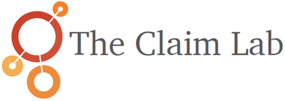June 2025 – Workplace Mental Health: Getting the Right Care to the Right People
Dr Les Kertay – Chief Psychologist at The Claim Lab
We’re facing a mental health crisis in the workplace, but perhaps not exactly the one most people think. While headlines focus on rising demand for mental health services, the deeper issue is our collective inability to distinguish between normal work stress and clinical conditions requiring professional intervention. This misalignment is overwhelming our mental health system while potentially leaving those who need clinical care waiting longer for treatment—and it fails to address fundamental problems with how work is structured.
The Triage Challenge
As both a clinical psychologist and someone who works extensively with employers on workplace mental health, I see this problem from multiple angles. Organizations are rightfully concerned about employee wellbeing, but many have inadvertently created pathways that funnel all stress-related concerns toward clinical services. Many organizations rely on Employee Assistance Programs built on cost models that anticipate low utilization—a fundamentally flawed approach to addressing widespread workplace stress.
We’ve expanded access to mental health benefits without corresponding investments in differential assessment and appropriate care matching. The result? A bottleneck where employees experiencing normal work stress compete for the same resources as those with clinical depression, anxiety disorders, or trauma-related conditions. This isn’t just inefficient—it’s potentially harmful to both groups.
When Work Stress Becomes Medicalized
Consider the employee struggling with a difficult manager, heavy workload, or challenges at home. These are legitimate concerns that impact wellbeing and performance, but they’re fundamentally different from clinical conditions like major depressive disorder or generalized anxiety disorder. Stress is a condition of life, not a clinical aberration. Yet in many workplace mental health programs, both scenarios lead to the same response: “You should talk to someone.”
This well-intentioned approach has several unintended consequences. Employees with stress-related concerns may receive clinical interventions they don’t need, potentially creating dependency on therapeutic services for what are essentially situational challenges. A poor fit between individual and clinician can actually create harm. More concerning, those with genuine clinical conditions may face longer wait times for specialized care as the system becomes saturated with lower-acuity cases.
The Changed Workplace Reality
The workplace itself has fundamentally changed. Remote work, 24/7 connectivity, increased time pressures with rationed resources, and diminished mutual loyalty between employers and employees create stressors that traditional mental health approaches weren’t designed to address. We expect faster, cheaper, and better—a triumvirate that’s rarely realistic.
Smart employers are beginning to recognize that not all mental health concerns require the same response, but they may not know where to focus. They’re investing in stress management training, leadership development, and apps or AI tools—often without understanding whether these interventions actually work. The intention is good, but do we know what the root causes are?
Progressive health policy makers similarly recognize the need for stepped care models, but again—do we know what works and what doesn’t? My experience working on clinical guideline committees suggests we don’t. Worse, often we don’t let what we do know influence our behavior.
Building Resilience While Preserving Clinical Resources
The solution isn’t to ignore workplace stress or suggest employees should simply “toughen up.” It also isn’t pretending we can recreate a defunct corporate model. Instead, we need differentiated approaches that build resilience for typical workplace challenges while ensuring rapid access to clinical care for those who need it.
Effective workplace mental health strategies include multiple intervention levels:
Organizational Prevention: Address systemic issues like unclear expectations, inadequate resources, or toxic management practices. Many mental health concerns stem from organizational factors that no amount of individual therapy—and no app—can solve.
Skill Building: Provide employees with tools for managing normal work stress and maintaining boundaries. Reward stress management and boundary-setting instead of piling on more work.
Early Identification: Train managers and HR professionals to recognize signs suggesting clinical assessment versus organizational interventions. Consider early detection with tools that screen for productivity risk before it becomes a problem, and non-medical interventions like Mental Health First Aid training for situations that are more than stress but may not require clinical treatment.
Streamlined Clinical Access: For employees with clinical conditions, ensure rapid access to appropriate care. Simply making EAP available isn’t enough.
A Call for Intelligent Design
What we need is intelligent design of workplace mental health programs that recognizes the spectrum of employee needs. This requires collaboration between employers, health plans, mental health providers, and policy makers to create systems that are both clinically sound and organizationally practical.
Employers should resist the urge to medicalize all workplace stress while maintaining genuine commitment to employee wellbeing—and examining whether their policies and management practices are part of the problem. Health policy should support stepped care models that efficiently allocate resources based on clinical need. Mental health providers need to understand they aren’t the answer to every problem, and that keeping people out of work because they’re stressed often makes things worse.
Policy makers need to understand that “fire, ready, aim” isn’t effective—we must understand the consequences of our policies and the evidence base for what works.
Workplace Mental Health: Getting the Right Care to the Right PeopleBy getting this balance right, we can create workplace mental health programs that truly serve both employee wellbeing and organizational effectiveness while preserving our mental health resources for those who need them most.
